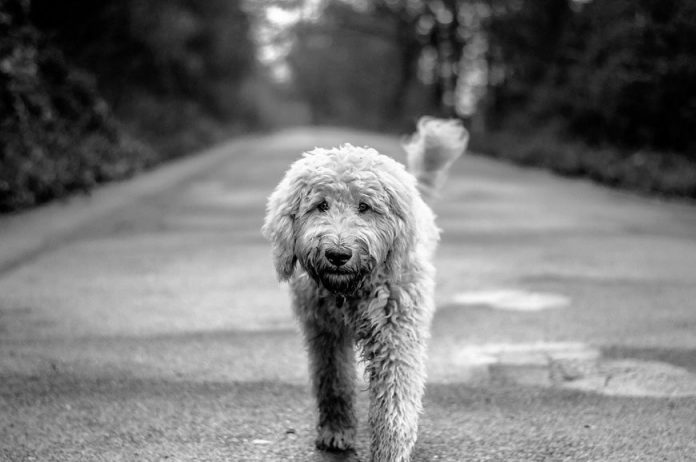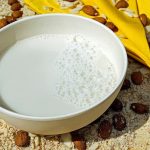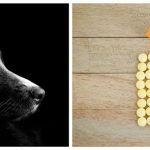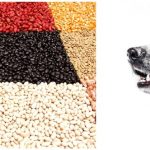Goldendoodles are one of the most lovable and playful dogs perfect for all dog lovers, including those with allergies. Mixed-breed dogs have long been favorite pets, but the Goldendoodle is still new to the world of dogs compared to other types of Poodle mixes.
Despite this, more and more people want to have Goldendoodles as a part of their family. This is not a surprise because aside from their hypoallergenic coat, they also have interesting colors and patterns.
Aren’t Goldendoodles Meant to be “Golden?”
The answer to this question is yes and no. Golden Retrievers bring only shades of cream, red and apricot to the genetic mix. However, since Poodles have a plethora of patterns and colors, Goldendoodles can also have various colors and patterns.
What Determines a Goldendoodle’s Color?
The fur color of a Goldendoodle is often determined by the dog parents, particularly the Poodle parent. This means that if a Black Standard Poodle was used to breed the litters, the puppies will also be black colored. On the other hand, puppies from litters bred from White Standard Poodles will have a cream color.
The only exception to this general rule of thumb is if there is a red Golden Retriever parent because the resulting be puppies will have an apricot color. It would be best to keep in mind that there is no assurance when it comes to the color of the puppies that will be produced from the mating. There are also litters that vary in the sense that a single litter can have black and cream puppies.
Do Goldendoodles Change Color When They Become Older?
Yes, the colors of Goldendoodles can change as they grow older. Unless a Goldendoodle is very dark brown or black, many Goldendoodle puppies can have their fur color in a cream shade.
Puppies with apricot color can also become lighter, but they will often remain apricot once they are fully grown. Thus, when looking for a Goldendoodle puppy, it is a must to keep in mind that the puppy’s current fur color may turn lighter as it grows older.
Different Colors of Goldendoodles
Goldendoodles come in various fur colors that can significantly vary even in the same litter. Black, red, brown and cream are the most common colors of Goldendoodles. These dogs usually have solid colors and it is rare for them to have patches of several colors.
Take a look at the following popular colors of Goldendoodles:
Red, Apricot, and Cream – These three shades are all genetically regarded as the same color because they belong to the same gene. The exact shade or color of a puppy is going to depend on how intense this gene is expressed.
Usually, when the two parents are both read, you can expect the litter to have a red color but if they are not, the puppies are usually apricot or cream.
Brown and Black – Black is one of the possible colors in all generations of Goldendoodles provided that one parent is brown or black. Two red, apricot or cream parents cannot produce a brown or black pup. However, brown or chocolate will only be possible in the F1b generations or beyond.
There is no such thing as a chocolate F1 Goldendoodle because Golden Retrievers don’t carry a brown gene, not to mention that this is a recessive one and you can only be expressed if there are two copies. Once chocolate becomes a muted brown color, it will be considered silver beige.
Silver and Blue – Blue pooches are born black and faded into an ashy charcoal color, which is too muted to be considered black but too dark to be regarded as silver. Grey and silver also start as black, gradually fading to silver through the years. If you shave a silver dog’s hair, you will notice silver at the hair roots.
Brindle and Sable – Brindle and sable are mixed colors. Sable puppies begin as a mixture of the base color with black tips. This base color can either be apricot, cream, red or silver or blue.
These black tips are going to grow out and once the puppy becomes an adult, it will look totally different from the head or ears being the only parts in a darker color. When you speak of brindle, it means stripes. This pattern is usually seen in boxers as well as other breeds.
Different Patterns of Goldendoodles
Aside from their colors, Goldendoodles are also notable for their different patterns.
Tuxedo
Dogs have a solid color, but have white markings in certain parts of the body that make it look as if they are wearing a tuxedo. The white markings appear mostly as a white belly, chest, legs and muzzle or face at times. The primary color of such dogs could be any color or pattern.
Parti
Two copies of the piebald gene or parti will result in a dog that is mostly white with patches of color, which can be cream, red, black, brown or apricot. The color of the patches on a dog depends on the genetic colors and the rest of the patterns carried by the dog. For example, merle partis are possible, which means that the patches of color are going to be merle patterned.
Abstract
These dogs have a solid color, but there are some white markings on their bodies. The markings are often on the chest, forehead, feet, tip of the tail and chin. The markings are not really as widespread compared to that of a tuxedo. Any puppy that gets one copy of the parti gene is going to have these white markings. The dog’s main color can be any pattern or color.
Merle
When you speak of merle, you can think of it as marbling. Merle can make the dog’s solid color lighter in some areas, resulting in the marbling effect. With merle being the dominant gene, it just takes a single copy of the gene to produce a merle patterning. Merle patterning comes in two types, namely chocolate merle and blue merle. Two merles should not be bred together.
Chocolate merle refers to a brown dog that has merle patterning. These dogs have brown color with tan marbling all over their bodies. The brown or chocolate color usually mutes to silver beige color once the dog becomes older.
On the other hand, blue merle results from a black dog that has merle patterning. These dogs appear black that have grey or silver marbling all over. A merle dog passes on this pattern to half of their offspring. With chocolate being possible in just the F1b generations and beyond, the chocolate merle adheres to this rule. However, blue merle is possible to appear in all generations.
Phantoms
Phantoms have a certain color and location of markings. You can think of the Rottweiler or Doberman pattern of the markings with chest markings, eyebrow patches, down the legs, under the tail and muzzle. This is a rare pattern because it depends on several genes to be present.
Tan or black phantom dogs have a black body that has brown markings on the chest, legs, muzzle and above the eyes such as eyebrows. Tan or brown phantom dogs have a brown body that has tan markings on the muzzle, chest, legs and above the eyes such as eyebrows.
Aside from the interesting colors and patterns on the fur of Goldendoodles, these dogs are also known for having different eye colors. There are some Goldendoodles that have brown eyes, blue eyes, amber eyes, green eyes and even multi-colored eyes, while others have one green eye and one blue eye or one brown eye and one blue eye.
It is a very common occurrence for Goldendoodles to have markings pretty much anywhere on the coat. Just be wary of those breeders claiming to have rare marked or rare colored Goldendoodles. This may mean that the breeder is not experienced and not familiar with the Poodle lineage and pedigree.























